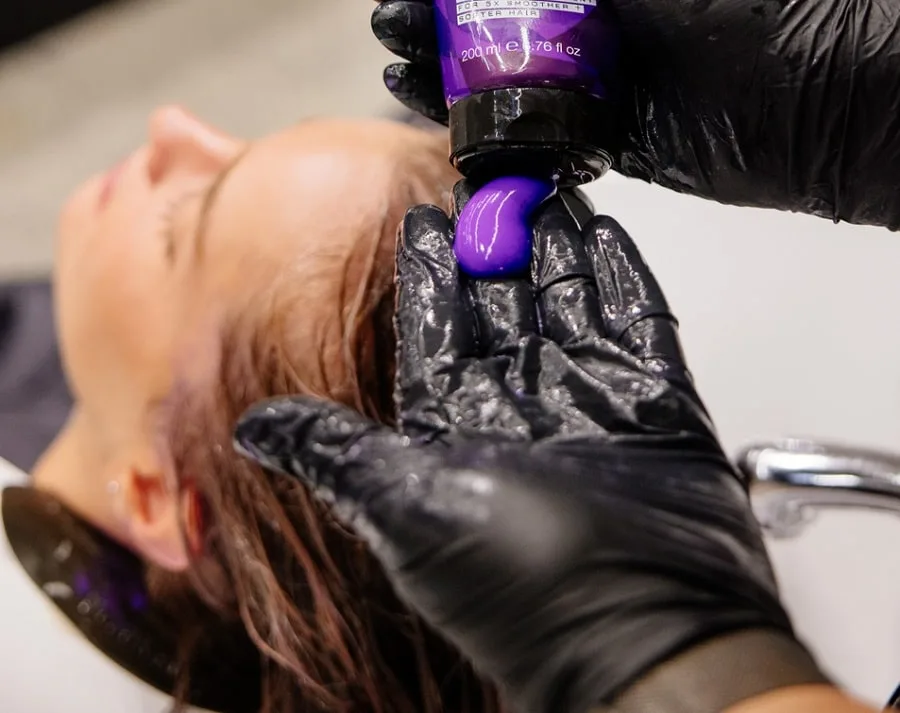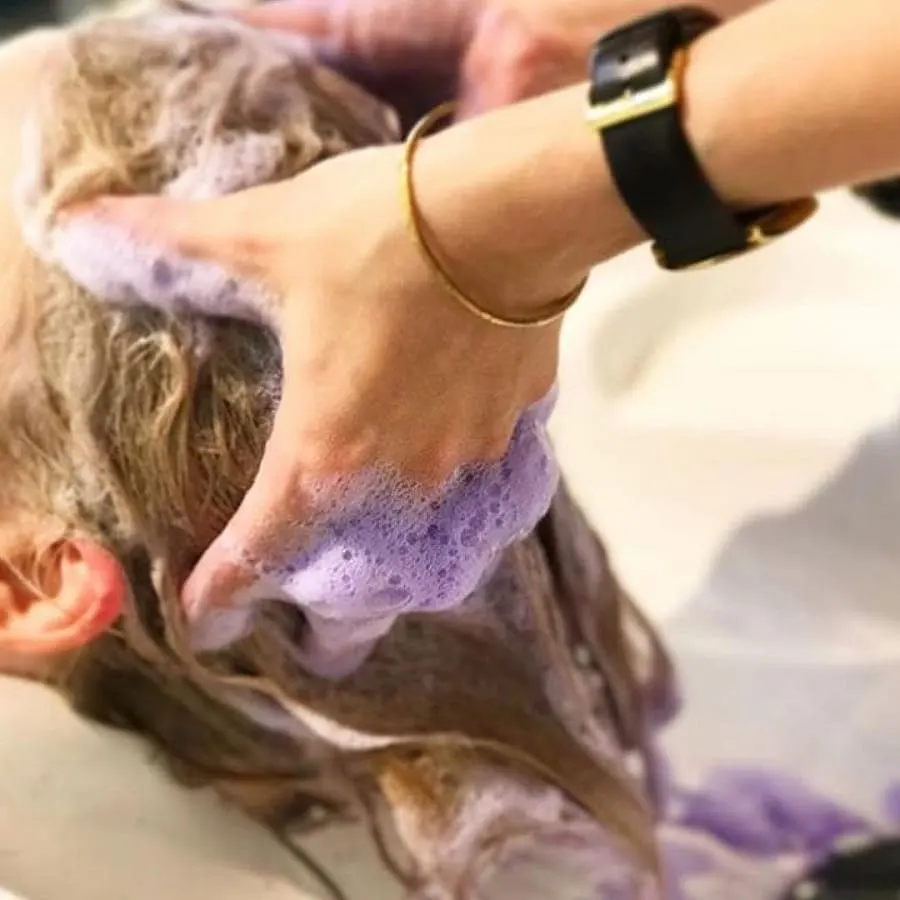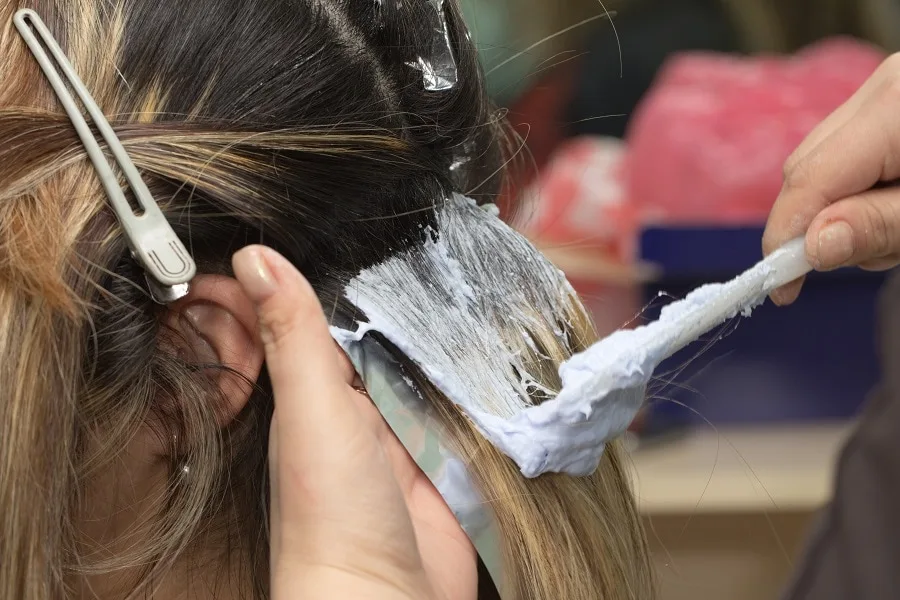The color of the shampoo you use can significantly affect your hair color, helping to neutralize certain tones while emphasizing others.
You’re likely wondering what will happen if you mix blue shampoo with purple shampoo. Don’t worry; we’ve got all the information you need about combining these two shampoo types.
Can You Mix Blue Shampoo and Purple Shampoo?
Yes, you can mix blue shampoo with purple shampoo to add shine, reduce brassiness, and provide color correction. However, mixing these two shampoos doesn’t necessarily create a predictable color, so always do a strand test first.
Blue shampoo is typically used to neutralize brassy tones in brown and darker blonde hair, while purple shampoo is used to tone down yellow tones in blonde or gray hair.
By combining blue and purple shampoos, you can achieve the desired results faster than using one product alone. For example, if you have light blond highlights with some brassy undertones, using both products will help keep your highlights fresh while eliminating any unwanted warmth from your base color.
What is Blue Shampoo?

Blue shampoo contains blue-violet pigments that reduce unwanted yellow tones in blonde or gray hair. It also helps brighten dull locks and keep them looking vibrant between salon visits.
When using blue shampoo, following the instructions carefully is important, as overuse can result in a bluish hue on lighter-colored strands.
What is Purple Shampoo?

Purple shampoo contains violet pigments that help tone down brassiness in darker shades of brown or black hair by neutralizing warm tones such as orange, red, and gold.
Unlike blue shampoo, which you should use sparingly, purple shampoo can be used more often without compromising the hue of your hair.
How Do You Mix Purple and Blue Shampoo?
When you mix the two types together, make sure to use the same amount of each to avoid making your hair too dark or too light.
Start by wetting your hair with warm water and then apply both shampoos (start with blue shampoo) evenly throughout your strands, making sure not to miss any areas.
Gently massage the blended shampoos into your scalp for a few moments, then rinse with cold water to wash away.
Leave the blend for no more than five minutes prior to totally rinsing with tepid water; this can help ward off over-toning or under-toning issues caused by leaving it on too long or not long enough, respectively.
Additionally, be sure to use a conditioner afterward as this will help keep moisture locked in while also protecting against damage caused by harsh chemicals found in these types of products.
What Are the Benefits of Mixing Purple and Blue Shampoo?

The pros of mixing blue and purple shampoo include achieving more vibrant colors that last longer than if you used one product alone. Additionally, combining the two will help tone down brassiness while still maintaining shine and vibrancy in colored hair.
Keep in mind that mixing the two types of shampoo can also create potential problems. Using too much of either product can lead to undesirable results such as greenish hues instead of blonde tones or overly dark shades instead of natural highlights.
Mixing hues of blue and purple shampoos may be an effective approach to attaining the desired hair color, but other choices could be better suited for certain hair type.
Alternatives to Mixing Blue and Purple Shampoo

If you’re looking for a substitute for blending blue and purple shampoo, there are several other techniques for getting the hair shade you desire.
The most popular option is using toners or semi-permanent dyes that can be applied directly to the hair. They deposit pigment into the strands of your hair, creating subtle shifts in tone without changing its overall hue. They also last longer than shampoos and conditioners, so they’re great for maintaining vibrant colors over time.
Finally, if you want something more permanent, consider getting highlights or lowlights done professionally at a salon – this will give you long-lasting results with minimal upkeep required on your part.
“I have yellow and some orange tones in my hair, Can I mix purple and blue shampoo?”
Mixing blue and purple shampoo is not recommended. Doing so can weaken their color-correcting effects. Instead, consider applying them separately based on your hair’s needs.
If your roots are orange and the rest of your hair is yellow, use blue shampoo on the roots and purple shampoo on the lengths and ends. First, wet your hair. Then, apply the purple shampoo, avoiding the roots.
With the shampoo still on your hair, lather the roots with blue shampoo. If the root’s undertones are stronger, massage blue shampoo on the roots without lathering too much. This minimizes the shampoo’s spread to the rest of your hair.
To make the process easier, try bending your head over. This allows your hair to hang away from your head, making it easier to control the lathering.
Mixing blue and purple shampoo can help increase color vibrancy and shine while also helping tone down brassiness.
However, your success with this mixture depends on the color and type of your hair, and you might not consistently achieve the shade you want. Always do a strand test before applying the mixed shampoo.
Recommended For You:
